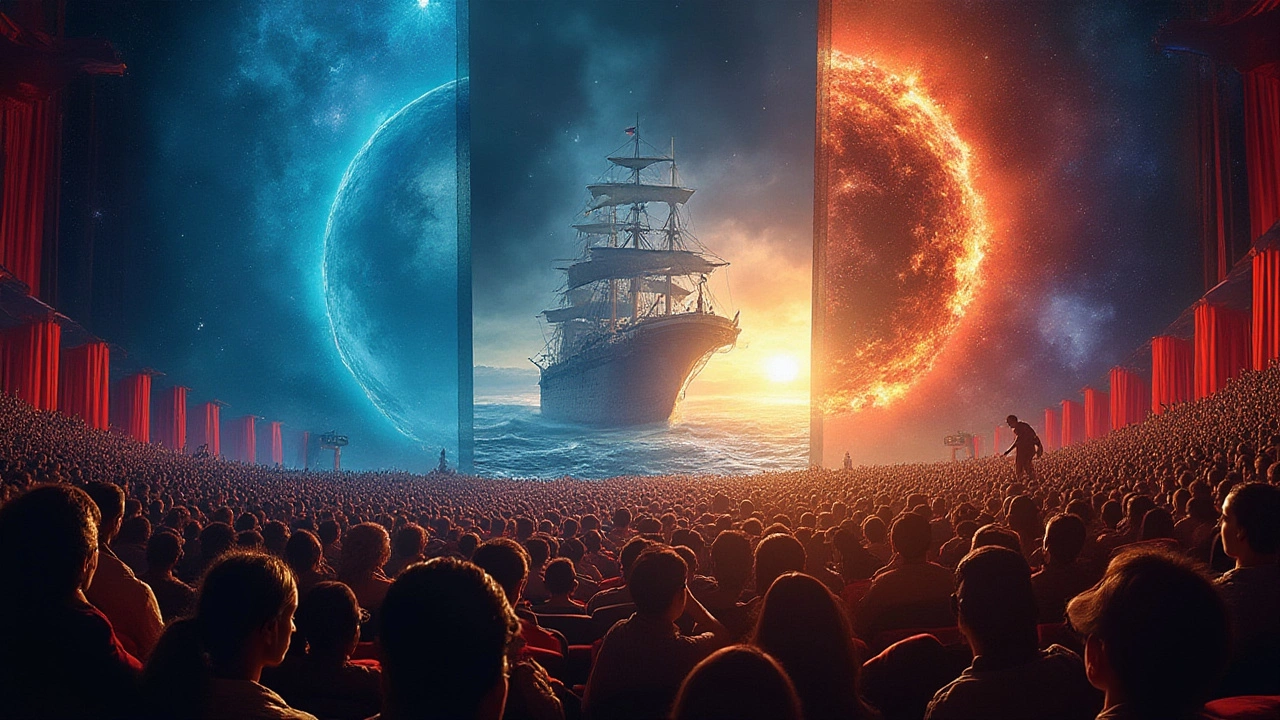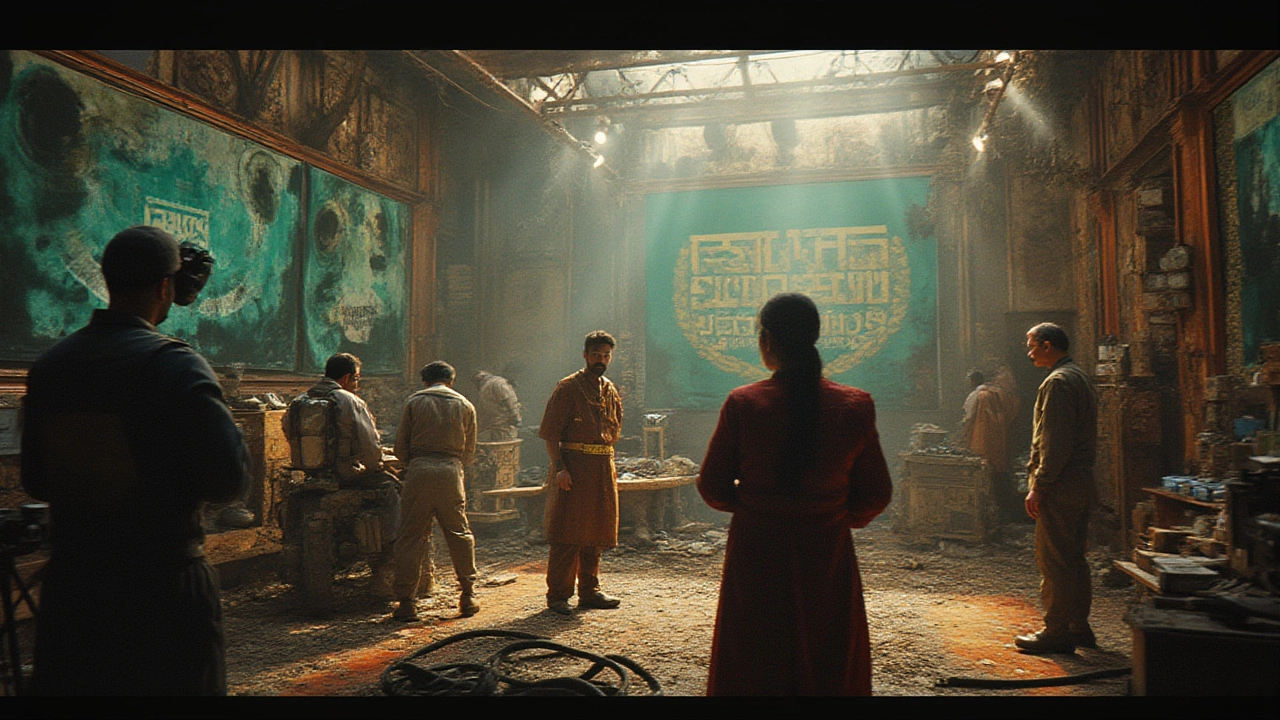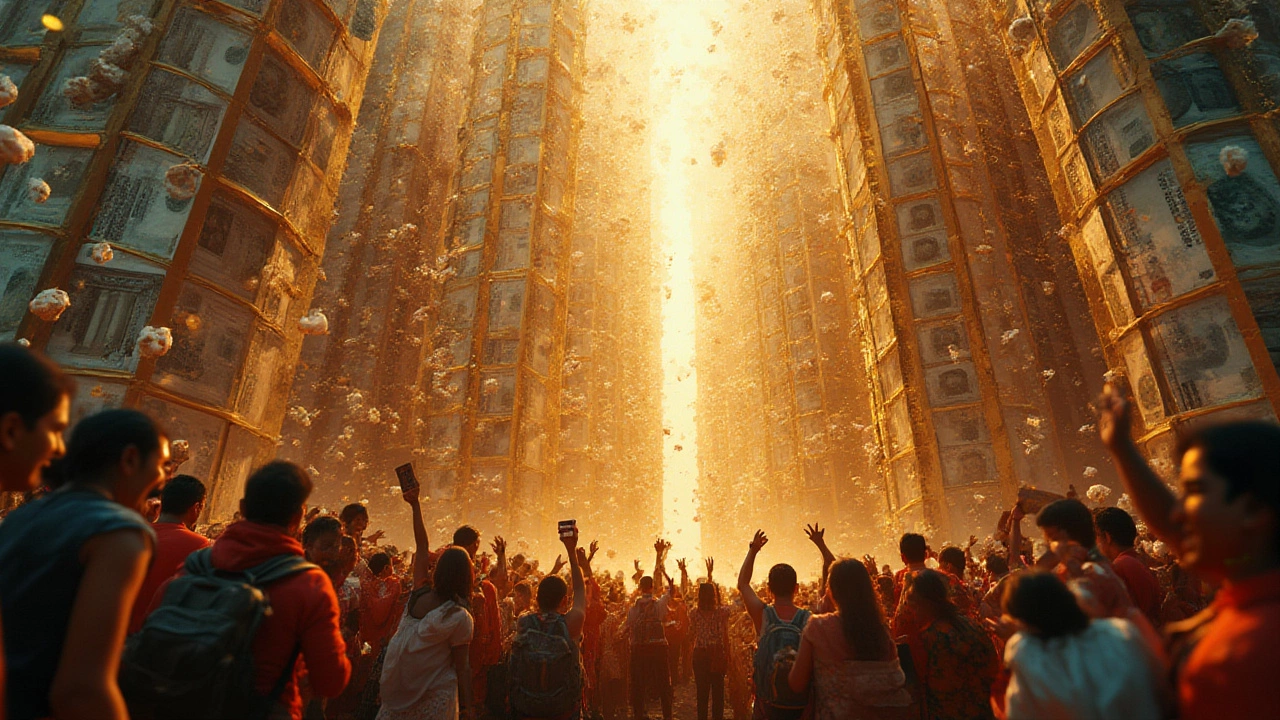Top 3 Highest Grossing Movies: Ultimate Box Office Hits Breaking Records
 Jul, 23 2025
Jul, 23 2025
Think movie tickets are pricey these days? Wait until you see the numbers racked up by the biggest blockbusters of all time. We’re talking earnings so huge, they make entire economies seem small by comparison. So, what’s the secret sauce for a film that becomes the king of the box office mountain? Let’s decode the phenomenon by taking a deep dive into the real giants—the top three highest grossing movies ever.
The Game Changer: Avatar’s Unmatched Run
"Avatar" stormed into theaters in December 2009 and casually smashed every revenue record laid before it. James Cameron, who already knew a thing or two about breaking box office ceilings after "Titanic," went all-in with revolutionary 3D technology and a massive visual effects budget. The magical world of Pandora mixed with a story that felt familiar yet refreshing. Audiences and critics got swept off their feet, and the movie just kept pulling people back for repeat viewings.
Let’s talk numbers. "Avatar" crossed the $2 billion mark globally faster than anyone believed possible, and by the time the dust settled (and after a couple of clever theatrical re-releases), it had hauled in somewhere around $2.923 billion. Dig into those figures and you’ll find its opening weekend alone stacked up over $77 million in North America. It kept going and going—much like everyone who couldn’t get enough of blue aliens and floating mountains. Fun fact: There are people out there who saw "Avatar" in theaters over a dozen times, chasing that wow factor you only get from groundbreaking CGI on a gigantic screen.
Some might chalk that success up to dazzling effects or the soon-to-be-iconic face of Neytiri, but it’s the meticulous scheduling and release strategies that really made a difference. Cameron orchestrated re-releases strategically in global markets whenever new tech or small edits arrived. That kept interest alive for years, something studios rarely pull off now. Why do fans still talk about "Avatar" more than a decade later? Partly, it’s that never-ending promise of sequels. Then there’s the experience—you didn’t just watch "Avatar," you hung out in Pandora for three hours and walked out wishing it were real.
How much more could "Avatar" have made? Consider this: an early 2010s study estimated that about 20% of viewers saw it again, meaning its re-watch value played a big part in boosting its record-setting haul. And if you want to revisit Pandora, Disney’s theme parks now let you actually stroll under those floating mountains. Not every mega hit lives on like this—"Avatar" has become a gold standard for immersive storytelling and clever franchise management, keeping its box office crown close (even when challengers come knocking).
The Avengers Assemble: Endgame’s Meteoric Ascent
Marvel’s "Avengers: Endgame" didn’t just break records in 2019—it smashed expectations, hearts, and, for good measure, just about every measuring stick the box office offered. This wasn’t just a movie; this was a cinematic event ten years in the making. By the time Tony Stark snapped those famous Infinity Stones, audiences worldwide had spent over a decade following Marvel’s expanding universe, and everyone wanted to see how it ended. Or, let’s be honest, how it would begin again.
With a final global tally of $2.799 billion, "Endgame" managed to edge briefly past "Avatar" after an aggressive marketing push and a special re-release featuring brand-new scenes. In the United States, opening weekend sales reached a wild $357 million—more than some entire movies make in their run. Across China, ticket sales froze apps and websites as fans scrambled to book seats in advance. Disney even staged fan events and live Q&A screenings with the cast to push attendance through the roof. It wasn’t just hype; the marketing blitz set a new industry blueprint for how to turn anticipation into ticket sales.
Let’s go deeper. What makes "Endgame" a true box office beast isn’t the special effects or action, though both delivered in spades. It’s emotion, nostalgia, payoff. Remember Cap finally wielding Thor’s hammer? Or that army of characters charging together? These are crafted moments designed to send chills up superfan’s spines. The directors, the Russo brothers, built trust over years so that, when it all ended, fans lined up for midnight showings in superhero cosplay, sometimes three or four nights in a row. That doesn’t happen if you don’t earn it.
The merchandise game? Next level. Funko Pops, exclusive posters, limited edition snacks—you couldn’t move a few feet in a comic shop without tripping over "Endgame" swag. And streaming services, just getting started in 2019, crashed from demand whenever scenes dropped online. This wasn’t just big box office—"Endgame" became a global watercooler moment.
Want to see how "Endgame"’s haul really stacks up? Here’s a quick table comparing all three top movies:
| Movie | Director | Release Year | Worldwide Gross |
|---|---|---|---|
| Avatar | James Cameron | 2009 | $2.923 billion |
| Avengers: Endgame | Anthony & Joe Russo | 2019 | $2.799 billion |
| Titanic | James Cameron | 1997 | $2.264 billion |
Marvel basically wrote the playbook for what it takes to fire up audiences everywhere at once. And, for the record, if you adjust "Endgame’s" earnings for inflation, it gets even closer to snatching that number one spot from "Avatar." The biggest tip for filmmakers? Don’t just build hype—deliver an experience fans have never seen before. Marvel’s world-building did just that, and the box office responded in a big, big way.

The Unsinkable Queen: Titanic’s Ageless Appeal
Here’s the wild part: "Titanic" is still sitting pretty on the box office podium, nearly three decades after it made its mark. Released in 1997, James Cameron’s epic love-tragedy wasn’t expected to do what it did. Most major Hollywood studios thought the $200 million budget would sink it faster than the ship itself. Instead, it became a cultural juggernaut, making stars of Leonardo DiCaprio and Kate Winslet, sparking a fashion wave (hands up if you’ve ever sketched a portrait on a napkin), and gifting the world “My Heart Will Go On.” Celine Dion probably still belts it out in her sleep.
"Titanic" hauled in $2.264 billion worldwide—without the modern-day advantages of social media hype or superhero fandoms. That’s what makes its run so special. People actually cried in theaters, sometimes more than once. The limited re-releases—including 3D upgrades and anniversary editions—kept interest alive for new audiences and nostalgia seekers alike. “I’ll never let go, Jack,” just never seems to get old.
But here’s the secret engine behind "Titanic’s" box office staying power: word of mouth. Research from the late ‘90s showed many ticket buyers were returning to catch moments they swore they missed while sobbing their way through the iceberg scenes. The blend of love, tragedy, and unsinkable hope, all filmed with obsessive attention to detail (think historically accurate set designs and costumes), made for endless rewatch appeal. Plus, the film stuck around at number one at the box office for 15 weeks straight—a streak that’s almost unheard of these days.
You can thank Cameron’s perfectionism too—every plate, teacup, and staircase was a replica of the real deal. He even had the cast rehearse in cold water tanks for that authentic, shivering-in-the-Atlantic vibe. And don’t forget the big trivia tidbit: "Titanic" was the first film to cross the billion-dollar mark at the box office, setting a benchmark. Today’s blockbusters may have superhero power, but "Titanic" did it with tears, romance, and a whole lot of frozen drama.
What Makes These Box Office Kings So Unbeatable?
No two mega hits look the same on the surface, but "Avatar," "Avengers: Endgame," and "Titanic" do share some secret ingredients—massive spectacle, heaps of emotion, clever marketing, and perfect timing. These movies weren’t just films. They were events. People planned dates around them. Families showed up in droves. The hype didn’t just come from flashy trailers, but the deep gut-level excitement you only get for something totally unique.
Let’s break it down. First, repeat viewings: all three films saw a huge chunk of their profits from people coming back, sometimes again and again. Next, accessibility—these movies launched in as many languages and markets as possible, and in the case of "Avatar" and "Endgame," tech helped. Advanced 3D screenings, IMAX experiences, and online pre-sales let fans lock in the best seats way ahead of time.
Don’t downplay the emotional punch either. Whether audiences were rooting for Jack and Rose to survive, the Avengers to save the universe, or Jake Sully to find his new life among the Na’vi, these films delivered big stakes and cathartic payoffs. That kept them buzzing in conversation long after credit sequences rolled. Studios saw the new goldmine—give audiences something to talk about, and they’ll bring friends back for round two.
And here’s a practical tip—if a studio aims for a record run, don’t just go wide. Go deep. Craft handy tie-ins (remember the Pandora rides at Disney theme parks?), clever merchandise, and social media events that let fans feel part of something global. Every re-release added new tweaks or features, giving original viewers a reason to check in again and letting newbies experience a slice of history. No small feat in a digital age where attention is the ultimate currency.

Will Anything Ever Top These Box Office Giants?
The million (well, billion) dollar question: can anything ever knock these three down a peg? The short answer is—maybe, but the challenge is tougher than ever. Moviegoing habits have changed, with streaming services pulling people onto their couches and ticket prices always creeping up. It also takes a perfect storm: iconic characters, a story with broad appeal, and the kind of technical innovation that demands a big screen.
A new franchise reboot or even a totally fresh concept might break through, but it’d take more than just star power. You need a reason for people not just to show up, but to come back for seconds (and thirds). When "Avatar 2" dropped, some thought it might reclaim the top spot, but even that didn’t quite reach the astronomical heights of its predecessor.
Still, studios are chasing the dream. Whether it’s more interactive experiences, higher-quality visuals, or deeper connections with global fan bases, the formula for success keeps evolving. For now, though, these three movies—driven by wild ambition, tech breakthroughs, and the ability to make us feel—sit at the very top of the box office mountain. If you’re curious about cinematic history or just need a recommendation for your next movie marathon, you really can’t go wrong with one of these all-time champs.